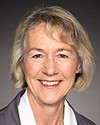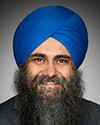I was simply going to say that we have nothing to say about the authors themselves. We just reviewed what others have said, and we rely on other scientists who have examined the BioInitiative Report and who have concluded that it is not in accordance with other science that's been accepted and peer-reviewed.
That seems to be the big difference, the fact that some are peer-reviewed and some are not. That seems to be a clear difference.
As I've stated before, we certainly welcome more study. At the same time, as we weigh the evidence—and I think it's important to weigh the evidence before us--around the world, and also examine what's perceived to be the risk, we cannot take away all the benefits that come from this technology, benefits that help us in our communities, with education, with health care, and with public safety. All of those have to be part of it. At a time when the federal government wants to embark on a digital economy strategy, which we think is very important for the future prosperity of our country, we have to make sure that we look at the evidence and don't succumb to fear over reason and conjecture over science, because that's really the choice before us.





